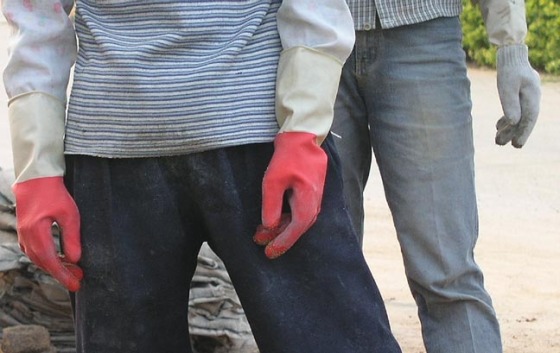Animist Cemetery - Ice Girl
Chapter 20.
Ice Girl said: North of Banlung in a remote jungle village along the Heart of Darkness they carve images of their dead.
The Chunchiet animist people bury their dead in the jungle. Life is a sacred jungle. Animists believe in the universal inherent power of nature world. The Tompoun and Jarai, among animist world tribes have sacred burial sites.
The Kachon village cemetery is one hour by boat on the Tonle Srepok River from Voen Sai. It is deep in the jungle.
The departed stays in the family home for five days before burial. Once a month family members make ritual sacrifices at the site. The village shaman dreams the departed will go to hell. In their spirit story dream the shaman meets LOTH, Leader of the Hell who asks for an animal sacrifice. The animist belief says sacrificing a buffalo and making statues of the departed will satisfy LOTH. It will renew the spirit and return it to the family.
After a year family members remove old structures, add two carved effigies, carve wooden elephant tusks, create new decorated roofs and sacrifice a buffalo at the grave during a festive week long celebration with food and rice wine for the entire village. New tombs have cement bases and carved effigies with cell phones and sunglasses. Never out of touch.
See your local long distance carrier for plans and coverage in your area. The future looks brighter than a day in a sacred jungle.
Fascinating, said Leo.
Walking is the best form of travel, said Ice Girl. Take your time quickly.
The paved road from Pakse, Laos to NE Cambodia is made for tourist buses, said Leo.
A rusty red and white metal border bar weighted by rocks in a bucket netted by twisted wire hangs suspended. The VIP double-decker candy cane colored bus is packed with babbling European flash packers destined for the 9th Century at Angkor Wat. They have a long way to go to get back in time. They are doingSEA.
The more they see the less they know, said a shaman.
The efficient busboy hands out departure and arrival forms, collects passports, a $2 Lao departure fee, a $25 Cambodia visa fee and $2 entry fee. He takes everything to a Lao shack. The border bar goes up. The bus rolls through no-man’s land at the speed of a snail.
Being landless is fun, dramatic and exciting. No country, no documents, no money, no food, no medicine, no family, no friends, no chance. Abandoned on a strip of soil.
A female Cambodian health care worker wearing a facemask and official shirt patch gets on the bus. Pointing a small medical toy gun into each face, she registers body temperature.
Someone said, “If you’re sick you stay here.”
“On the bus?”
“No. Between countries. On the road.”
Sounds like a novel.
Crossing a border is a transcendental act.
On the C side it’s business as usual. Immigration shacks, money changers, women hustling fried food, beverages, fruits, naked children, scavenging emaciated dogs, ripped cell phone umbrellas and haggard tourists drinking H2O waiting for the boy to return with passports.
An incomplete grandiose empty glass and brass Cambodian immigration building with fake Angkor temple motifs surrounded by landmines signifies exotic investment.
Money = tourism and tourism = money.
Stung Treng in Ratanakiri province is 87 clicks south along the Mekong. Tourists pass through this small faded colonial town. They have a schedule. Time chases them, Hurry up! Hurry Up! You’re going to be late for an important date. Get a move on.
Leo visited Mekong Blue, the Stung Treng Women’s Development Center. Fifty women are trained in a six-month silk weaving course. They harvest, dye and create silk textiles. It is a UNESCO award winner for superior quality, creativity and originality.
They have Mulberry trees for leaves. Worms eat the leaves. Their saliva makes yellow cocoons. Saliva becomes a protein and stronger than steel. They boil silkworm cocoons to extract raw yellow silk. One thread is 300 meters long.
It is separated into soft and fine threads. Women dye the threads using natural materials: banana (yellow), bougainvillea (yellow), almond leaves (black), lac insect nests (red and purple), prohut wood (yellow and green), lychee wood (black and gray), indigo (blue), and coconut (brown and pink).
Women also weave Ikat, a technique creating patterns on silk threads prior to dyeing and weaving. It is called HOL with 200 motifs.
The center improves the women’s standard of living. It breaks the cycle of poverty through vocational training and educational programs. They have a primary school with thirty-five kids and two teachers. Everyone receives lunch. It is the single biggest employer in town after the government.
That’s so cool, said Ice Girl.






 Share Article
Share Article 